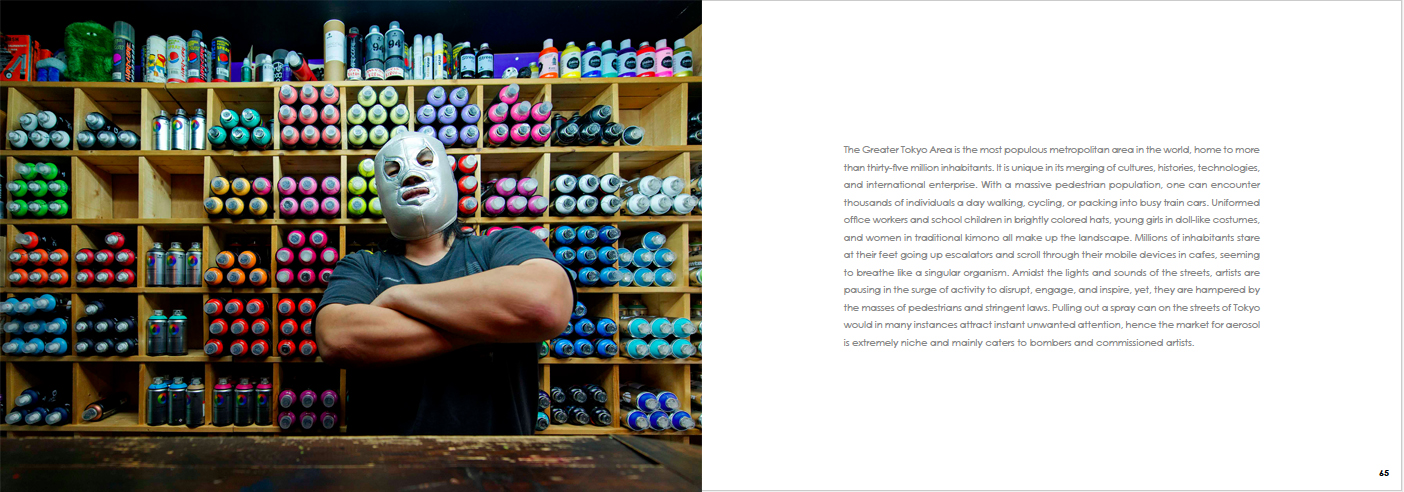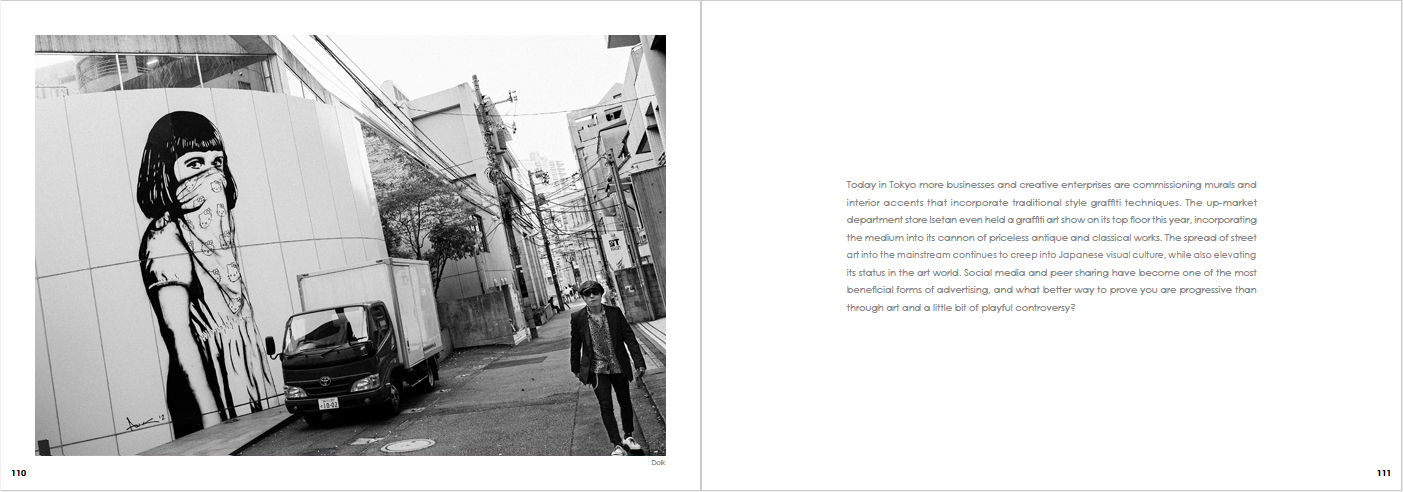TOKYO GRAFFITI
Does street art exist in spotless Tokyo? Yes! But strict vandalism laws and conservative Japanese culture have suppressed the graffiti scene in Tokyo. This stunning survey by photographer and graffiti artist Lord K2 takes you into the Tokyo neighborhoods exhibiting a colorful array of urban art created on the fly and as low-key as possible. Here is a look at vibrant stickers, tags, highly elaborate murals by both local and international artists, and a gallery of work by the artist network Pow! Wow! Worldwide. The images are accompanied by well-researched commentary and a history of Tokyo graffiti by Little Pink Pills (Mika Revell), positioning this book as a comprehensive introduction to the best kept secrets Tokyo's graffiti scene has to offer. A brief history
Size: 7.3 x 0.8 x 10.1 inches | 160 pages | ISBN-13 : 978-0764354731 | Binding: hard cover | 2018
Now also available in French at Éditions Place des Victoires
The earliest written mention of Japan is found in Chinese historical texts dating back to the first century AD. Now, more than 2,000 years later, one of the greatest cities in the world continues to barrel forward at light speed, leaving behind a trail of fascinating visual history. It takes approximately two hours in Tokyo to become charged with an electrifying current that will invade your sleep. Stepping onto a train filled with downcast, phone-lit faces you launch through a time-lapse of neon lit architecture from the 40s to present. Speckled with temples, monumental sculpture, sky scrapers, shrines, and shacks, Tokyo’s urban cityscape is interlaced with street art, sticker art, graffiti, and murals; you just have to look closely.
At first glance, Tokyo is one of the cleanest and most efficient cities to visit. The streets and train stations convey a manicured, respectful, and somehow futuristic vibe. It’s easy to acquire polite gestures, habits, and greetings by the hour. Unlike New York or Berlin, graffiti is not visible on every brick wall, nor is there spray paint on many signs or stencils on the sidewalks. There is a palpable adherence to tradition and a strong sense of respect for the country of Japan amongst its inhabitants. Perhaps derived from generations of a feudal system, Buddhism, and Shintoism, the lack of litter, silence on the trains, and absence of street art seem to be a communal response to the environment.
We all know the origins of mark making extend back to the beginnings of mankind. Nowadays, we can visually trace when certain elements of what has become the all encompassing term “street art” began to creep its way into the main stream. The gestural streaks of spray paint, the dripping markers, and high- contrast stencil techniques rapidly spread across continents and cultures, from the streets, to the galleries, and into the public. Although the content, conscience, and context of street art has changed constantly over time, the basic impetus has remained the same. Artists are compelled to create, sometimes for the aim of self expression; to reclaim the urban environment; and, sometimes, to criticize the current political or cultural norm. The desire to invade the public space, produce something new, and fascinate the viewer remain at the core of the urban art movement.
When you walk the streets of Tokyo you embark on a course compounded with cultural importance and moments of the surreal. Rivers dappled with cherry blossoms or flags and paper lanterns signify holidays, new seasons, or the type of business you will find inside. Finding street art may seem difficult at first, but once in the heart of areas like Shibuya, Shinjuku, or Harajuku, it is hard to miss. Street art is mostly localized to these busier, more international areas of commerce near large train stations and with high visibility. In these spots, one can find thousands of stickers, quick tags, and the works of internationally respected artists like Space Invader, Andre, Rone, and Buff Monster.
Although individual artists have different reasons for working in the streets, the desire to have your work seen is primary. Locations that are risky to get to, tread by famous artists, or that are capitals of activity are highly sought after. Tokyo presents an interesting challenge because of its laws, standards of cleanliness, and cultural heritage. However, this won’t stop the creativity and dedication of many. Like the cultural collage that is modern day Japan, the street art of Tokyo suggests a harmonious balance of incongruous elements. The use of calligraphic-style fonts, seventeenth-century traditional imagery, or the appropriation of Western graffiti styles all perpetuate a vibrant, innovative, and vital component of the Japanese and communal world view.
At the turn of the nineteenth century, the term avant-garde became used to describe those experimental individuals pushing the boundaries of society and intellect. Often preceding the philosophies, revolutions, and reforms of the era, the artists, authors, and free thinkers of a civilization led the way. Exploration, experimentation, and the violation of rules often comes with the territory. In Japan, many practices often seem bizarre or unnecessary yet are entrenched with deep significance. For a new generation, influenced by the outside world and more connected than ever before, it is a perplexing map to navigate. To uncover the mysteries of your own heritage while finding significance, purpose, and position amongst humanity seems a daunting task. Secretly painting in and out of plain sight, the new avant-garde are chipping away at those antiquated ideals, social injustices, and unnecessary regulations. The street artists of today’s Tokyo and other places around the globe are attacking the walls and perhaps the very foundations upon which they’re built.
東京グラフィティ













